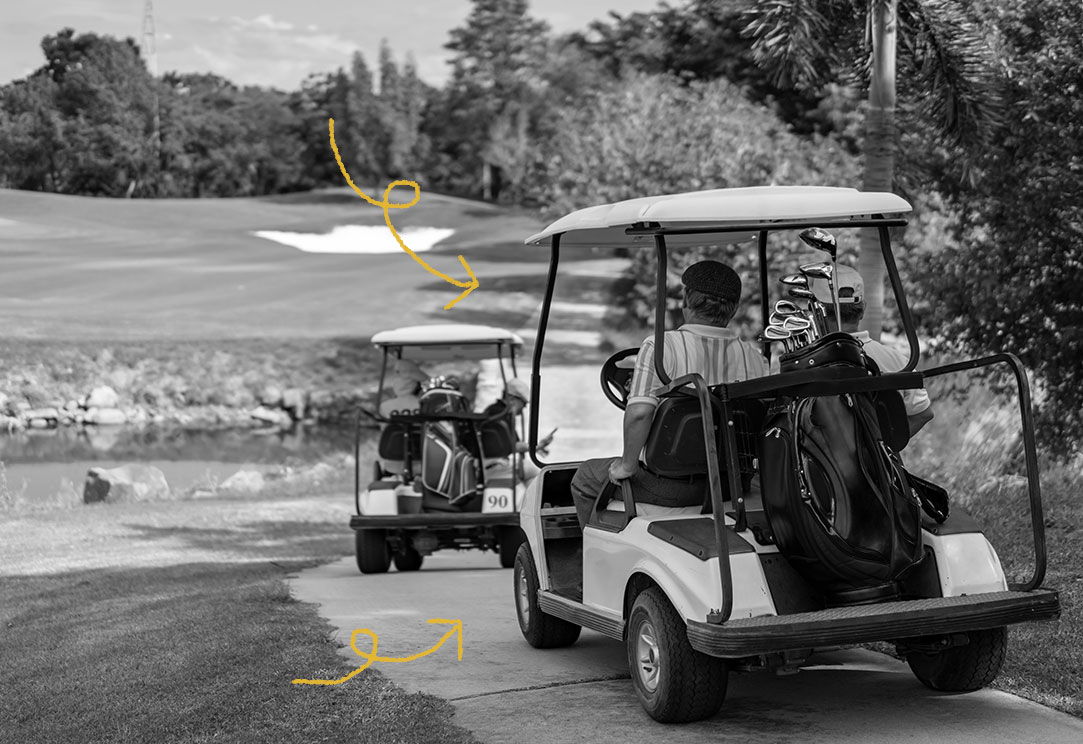The invention of the first golf cart is widely credited to Lyman Beecher. An avid golfer, Beecher created a rickshaw-type cart in 1932. It was originally unpowered and required two caddies to carry it. It reportedly debuted at the Biltmore Forest Country Club in Asheville, North Carolina. Later, Beecher added two additional wheels and six car batteries to create an independently operated golf cart. However, it was only able to propel itself for short distances. That same decade saw the creation of several other electric golf carts, but all were expensive to maintain and could not cover great distances, so most golfers continued to walk the course. In the 1950s, a Texas oil tycoon named R.J. Jackson invented a three-wheeled, gas-powered golf cart. He nicknamed it the “Arthritis Special” and disabled golfers were the main clientele, just like with many previous versions of the golf cart. Unfortunately, early gas-powered carts like Jackson’s created noise and smoke that golf courses disliked, leading to many of them being banned. Still, over the course of the decade, many other manufacturers created their own gas-powered golf carts and over time, the designs improved, significantly reducing smoke and noise emissions. Around the same time, golf courses realized that there were significant profits to be made by renting these improved golf carts to golfers, and at that point, the golf cart began to truly take off. Over the course of the rest of the 20th century and into the 21st century, many different models of both gas-powered and electric-powered golf carts have been made. Today, golf carts are an ubiquitous sight at most golf courses around the world and are also used for transportation at other facilities, such as hotels, retirement communities, beaches, and campgrounds.

Your go-to guide for weird history facts
Subscribe to the FREE daily email that makes learning about history fun.


